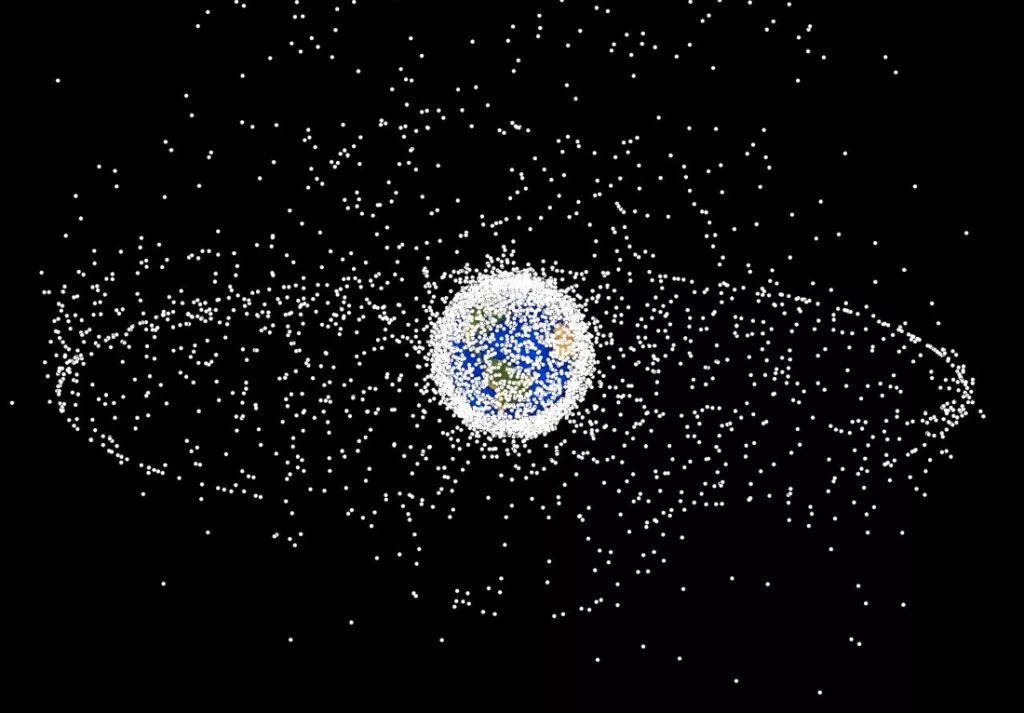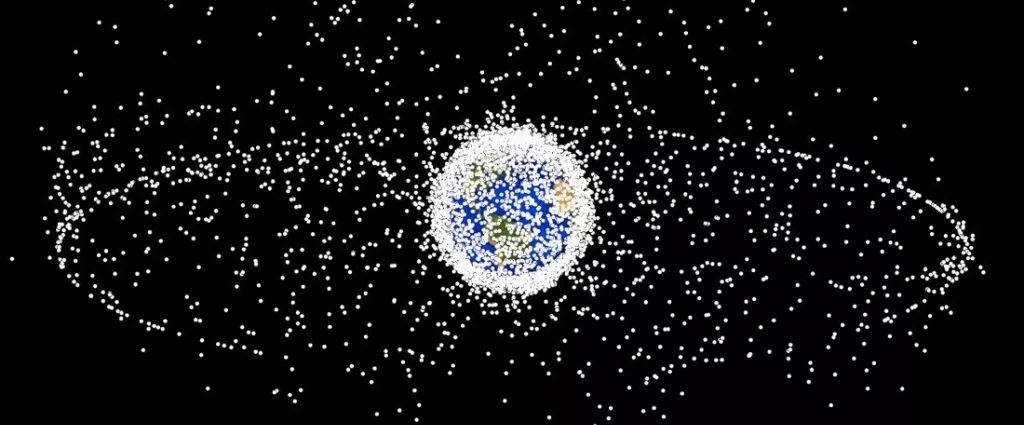
Before humans first started sending objects into Earth orbit, the pocket of space around our planet was clear and clean. But the launch of Sputnik 1 in October of 1957 changed everything. Since then, the space debris has been accumulating, with the amount of useless, defunct satellites vastly outnumbering the operational objects in our orbit.
A new annual report from the European Space Agency (ESA) has found that while we have become aware of the problem and taken steps in recent years to mitigate it, those steps are currently not keeping up with the sheer scale of space junk.
All spacefaring nations have contributed to the problem, which is significant: as more and more defunct objects populate near-Earth space, the risk of collision rises – which, as objects crash and shatter, produces even more space debris.
The hazards have been prominent in the last year. We have not only watched as two large dead satellites very nearly collided, but the International Space Station has had to undertake emergency manoeuvres three times to avoid colliding with space debris.
But collisions are not even close to being the biggest problem, according to the ESA’s report. In the last 10 years, collisions were responsible for just 0.83 percent of all fragmentation events.
“The biggest contributor to the current space debris problem is explosions in orbit, caused by left-over energy – fuel and batteries – onboard spacecraft and rockets,” said Holger Krag, head of the ESA’s Space Safety Programme.
“Despite measures being in place for years to prevent this, we see no decline in the number of such events. Trends towards end-of-mission disposal are improving, but at a slow pace.”
The space junk problem was first raised in the 1960s, but it took a long time for mitigation measures to be identified and implemented. Now, spacefaring nations are much better at planning for what happens to satellites and rockets at the end of their missions.
Reusable rockets are a big one, although the technology is still in its infancy. For decades, rocket boosters were just left to drift away once they’d delivered their payloads into low-Earth orbit. Some of those discarded boosters have been out there for decades.
Other mitigation measures include designing and building spacecraft that can better withstand the harsh environment of space without disintegrating; releasing stored energy and fuel to make defunct spacecraft less likely to explode; and, once a spacecraft’s mission is over, moving it to a safer orbit.
This would mean either a “graveyard orbit” high above the low-Earth space used for operational spacecraft, or bringing it down into Earth’s atmosphere to burn up on reentry as a neat disposal system.
But even with these measures in place, 12 fragmentation events have taken place every year for the past two decades. That number is rising, with each fragmentation event potentially introducing thousands of pieces of small debris in Earth orbit. At orbital velocities, even the tiniest pieces of debris can disable an operational satellite.
According to the ESA’s statistical model, there are over 130 million pieces of anthropogenic space debris smaller than a millimetre. The only way we can hope to do anything about the problem is by working together.
The good news is that, in the past decade, there has been an increase in the number of spacefaring nations complying with international guidelines. Those that don’t comply with orbit guidelines are growing increasingly likely to comply with space debris mitigation measures.
But how we use space is changing. Satellite swarms, smallsats and “constellations” are becoming more common. SpaceX’s StarLink alone has put hundreds of satellites in low-Earth orbit. So, the ESA says, it’s more important than ever that everyone cooperates to keep our little corner of space as clean as we can.
“The accelerating increase of satellites launched into low-Earth orbit is starkly visible in our latest report,” said Tim Florer, Head of the ESA’s Space Debris Office.
“To continue benefiting from the science, technology and data that operating in space brings, it is vital that we achieve better compliance with existing space debris mitigation guidelines in spacecraft design and operations. It cannot be stressed enough – this is essential for the sustainable use of space.”
The ESA is actively working towards solutions. It has commissioned a project to attempt to collect space debris, with the proof-of-concept planned to launch in 2025. They’re also trying to develop technology to automate collision avoidance manoeuvres, so that human controllers don’t need to track and control every piece of equipment or decommissioned satellite in low-Earth space.
And measures such as a Space Sustainability Rating can help nations developing space technologies by providing a baseline by which to adhere.
“Space debris poses a problem for the near Earth environment on a global scale, to which all spacefaring nations have contributed and for which only a globally supported solution can be the answer,” the ESA wrote in its report.
You can read the full report here.





















